The Ferrari FF isn’t scheduled for market release in Australia until early next year. However, in a bid to assist sales the FF is currently touring select locations. Brisbane, Sydney and Melbourne were the chosen destinations for the first ever all-wheel drive Fezza.
A short while ago local pricing was announced, too, and at a cool $625,000 plus delivery and on road costs you probably would like an up close look before signing on the bottom line. But, just in case you can’t make it the FF we’ve assembled a photo gallery for you to admire the 660PS V12 supercar.
As for us, if we had $600 large burning a hole in our pockets, we’d go for a Mercedes SLS AMG for pose value (and the noise), a BMW 1M for fun and games and a Golf R for daily duties. You can assemble a decent list cars for $600K! Let us know below if you’d go for the Ferrari FF, or an assortment of other riches.
The Ferrari FF makes its Australian debut
One of the most eagerly anticipated automotive new arrivals in Australia, the all-new four wheel drive Ferrari FF, is making a flying visit to Australia prior to its full launch in early 2012 so that prospective owners may see the unique supercar.
“This new Ferrari takes the prancing horse into new territory, matching the legendary performance, style and driving excitement expected of a Ferrari with new levels of ability thanks to its unique four wheel drive system and its spacious and flexible interior which makes it the most useable and versatile supercar built by Ferrari,†says Kevin Wall, General Manager of European Automotive Imports, the official Ferrari importer in Australia and New Zealand. “It is, therefore, no surprise, to learn that this new model has generated new levels of excitement and interest amongst both existing Ferrari owners and prospective owners. To meet these demands we have brought a Ferrari FF to Australia ahead of its full launch and it will be on display in Sydney, Melbourne and Brisbane during the first half of June.â€
The Ferrari FF is on display at Euromarque in Brisbane, Ferrari Maserati Sydney and Melbourne’s Zagame Ferrari during the first two weeks of June and may be viewed by prior appointment.
The Ferrari FF is a four-seater that utterly changes the whole GT sports car concept, hailing nothing short of a revolution in the auto world. Even the most cursory glance at the FF’s sleek, Pininfarina-penned super model profile will tell you that.
The Australian price of the Ferrari FF has also been confirmed ahead of the first deliveries to Australia starting in early 2011 at $625,000 excluding statutory charges, delivery and dealer costs. This represents a saving of $73,000 before statutory charges, delivery and dealer costs compared to the out-going Ferrari 612.
Drive it – anywhere, any time, in any weather or road conditions – and you’ll know why it’s so radical. It may be a car that has elegance, beauty and art in its soul, but there’s much, much more to the FF than sophisticated allure. It was, in fact, designed specifically to tackle the toughest, most complex and ambitious of driving challenges. The kind of challenges that the most uncompromising and discerning drivers will want to set it. Drivers that demand their cars give of their all. Effortlessly. Regardless of weather or surface.
The FF will more than match anything that’s asked of it because it is quite simply the most versatile car ever produced by the pens, computers, monkey wrenches and milling machines of the Prancing Horse technicians, engineers, designers and mechanics.
The FF: a name, as we said, inspired by the car’s four generous, body-hugging seats and, more significantly, the new Prancing Horse-patented four-wheel drive system. Purists will be overjoyed to know that it is still the rear wheels that actually provide the power, with torque being transferred only to the front axle when required and even then intelligently and predicatively distributed to all four wheels. Yet another reason why this is the most versatile Ferrari ever built.
But take note: the FF is also the most exclusive GT on the market, the very pinnacle of achievement in the “extreme GT†segment, the most powerful four-seater in the world. It has it all: exceptional, class-topping performance that pushes its signature Ferrari thoroughbred DNA and driving pleasure to the utmost, regardless of weather or terrain. Even on snow, ice and dirt.
The FF also sets a new benchmark in terms of sheer innovation: it is the first four-wheel drive V12 with a rear-mounted electronic differential, the E-Diff.
The Ferrari-patented four-wheel drive system is unique of its kind and also integrated with the new generation F1-Trac traction control developed specifically for the track. The FF is also the first and only V12 in the world to sport the seven-speed dual-clutch F1 gearbox with 20% more power output and 25% lower fuel consumption. It offers four occupants superb in-car comfort with wraparound seats and absolutely unprecedented cabin and luggage space for a car in its category.
The FF’s architecture too ticks all the boxes with authentic sports car driving dynamics, braking and suspensions. It also boasts the best weight-power ratio ever achieved, thanks in part to the fact that its patented four-wheel drive system is just 50% the weight of a traditional version. Style-wise, the FF is sculptural yet streamlined: it has an innovative shooting brake shape, modern styling cues, and third millennium aerodynamic and conceptual solutions to underscore its sporty stance. It is also unique on several levels: for instance, the paints used for its livery were specifically designed for it and the leathers that adorn its interiors have been given an innovative treatment to enhance their natural beauty.
The FF is tailored to perfection to suit the exclusive style of its owner. It’s as much a car for day-to-day driving as it is for extraordinarily unique occasions.
A car you can drive alone or share on a road trip with three other occupants. A car to take it easy in or really push to the limits.
- A Ferrari that demands to be driven.
- A Ferrari in which to test your.
- A dream car.
TECHNOLOGY AND INNOVATION
The engine
Make no mistake about it: the FF has the DNA of a thoroughbred Ferrari. It is not only sporty in the extreme but also comfortable and easy to handle. It brings a wealth of technology to the mix, starting with a completely new mid-front-mounted 6,262 cc GDI V12 that delivers unprecedented performance and responsiveness at all engine speeds: 660 CV at 8,000 rpm, a specific output of 105 CV/l (77 kW/ cu in), a weight-power ratio of 2.7 Kg/CV. The torque is also blistering: 683 Nm at 6, 000 rpm, 500 Nm available from 1,000 rpm up to 8,000 rpm (virtually across the entire range), guaranteeing unparalleled versatility.
To top it off, the FF has a top speed of 335 Km/h and sprints from 0 to 100 km/h in just 3.7 seconds.
Those impressive figures are the result of a host of technical solutions which include high pressure GDI (200 bar) and Split Injection Control that guarantee perfect fuel pulverisation and an optimal air-fuel mix up to 8,000 rpm. The FF also has the highest compression ratio (12.3:1) in its segment and a valve system that counteracts drops in pressure and losses due to windage caused by the pumping action of the pistons. Leading-edge materials have been adopted for the pistons, seals and camshaft to minimise friction. The FF has a combustion control system that uses ionisation currents – this boosts the engine’s power output whilst reducing both fuel consumption and CO2 emissions to levels previously unheard of in a car with these characteristics.
This impressive result is attributable to a whole series of factors affecting every area of the car. They include the introduction of the HELE (High Emotions-Low Emissions) and the Stop&Start Systems, which cuts out the engine during short stops and then restarts it w in 230 ms, optimised braking, intelligent engine fan control, constant fuel pump capacity control, and electronic air-conditioning compressor displacement control. All of these solutions combine to cut fuel consumption to just 15.4 litres per 100 km and CO2 emissions to 360 g/km, a 25% reduction on the previous Ferrari V12s.
The engine’s geometries and materials were also developed to harmonise intake and exhaust sounds to underscore the car’s extremely sporty character without impinging on acoustic comfort. To the ears of the driver and passengers, the FF’s engine sound is seductively clear and powerful because the intake noise is channelled from the filter casings into the cabin. The Ferrari orchestra playing in this V12 never misses a note regardless of speed or conditions. It is also designed to ensure that anyone that hears an FF go by will instantly recognise its unmistakable Ferrari soundtrack without experiencing the slightest discomfort. This isn’t noise: it’s music to the ears.
Transmission and vehicle dynamics
The FF delivers signature exhilarating Prancing Horse driving pleasure as it effortlessly copes with low grip surfaces, handles beautifully in all kinds of conditions, and delivers superb high-performance starts from standstill even on the slipperiest, snowiest and iciest of surfaces. The coupling of its powerful V12 with the Ferrari F1 seven-speed dual clutch gearbox make it a joy to drive.
Owners will be able to experience its power and sophistication on all kinds of terrain and conditions too, courtesy of Ferrari’s patented new lightweight 4RM (four-wheel drive).
The F1 dual clutch gearbox combines the unadulterated driving pleasure of a sequential gearbox with the comfort of an automatic one. Gear-shifting times have been cut to zero and the acceleration gap typically experienced with manual and electrohydraulic gearboxes has been completely eliminated. The E-Diff is now integrated into the gearbox casing itself, a solution that has helped reduce the car’s overall weight. Ferrari’s first ever four-wheel drive system actually shares a CPU with the E-Diff and F1-Trac. This fact, combined with instantaneous grip estimation on any kind of surface, guarantees perfect driveability and handling even when conditions are so poor that the rear-wheel drive can no longer send enough power to the road. This is the kind of situation drivers typically find themselves faced with on extremely slippery icy or snow-covered surfaces.
4RM System
The 4RM is an entirely new system that transmits torque to all four wheels of the car. A Ferrari patent, it is the main innovation sported by the new FF. Unlike a conventional four-wheel drive system fitted to a front-engined car, it allows the retention of the traditional mid-front engine architecture, with rear transaxle connected to the engine by a single driveshaft. Added to this is the new Power Transfer Unit or PTU for the front wheels, which is connected directly to the engine and located over the front axle.
This layout permits:
- A 50% saving in weight compared to a traditional four-wheel drive system. This greatly benefits the FF’s weight-to-power ratio and thus its performance;
- A low centre of gravity to be maintained and the retention of Ferrari’s signature weight distribution with more than 50% of weight over the rear axle despite it being a front-engined car.
The PTU is the main mechanical component of the 4RM and manages the difference between the engine and wheel speeds. It also controls the amount of torque sent to the front wheels in general and distributes it between left and right as required. The PTU gets its power and torque directly from the crankshaft through a system of gearbox ratios. Two independent carbon-fibre oil-bath wet multi-plate clutch packs then vector the torque to a half shaft connected to the front wheels. Thus, there is no mechanical connection between rear and front axles as they are linked to two completely independent traction systems. This means the FF can be rear-wheel drive-only so that none of the exhilarating driving pleasure associated with this kind of car is lost.
Lastly, the multi-disc clutches also deal with the different speeds at which the front and rear wheels rotate, and the front axle, fulfilling the function of the centre and front differentials in a traditional 4WD system.
Furthermore, the front clutches are completely independent and have torque vectoring functions to allow different amounts of torque to be sent to the left and right wheels. The amount of torque transmitted is controlled by closing the disc packs in the individual clutches.
The PTU is also very compact (barely 170 mm long) and extremely light with the result that the 4RM weighs 50% less than a conventional 4WD system.
The hydraulic gear and clutch actuation system is integrated into the PTU, as with the F1 Dual Clutch gearbox, and this delivers absolutely blistering gear-shifting times and thus improved system responsiveness.
Dynamic Controls
Dynamic vehicle control is also managed first and foremost by the Evolved GT Manettino on the F1-derived steering wheel. It has five settings: ESC OFF, which disables all traction and stability control systems; SPORT, to enhance driving pleasure in high grip situations; COMFORT, for maximum stability and easy handling in high grip situations; WET and ICE-SNOW, with electronic controls specifically calibrated for maximum stability and ease of handling in low and very low grip conditions.
The Evolved GT Manettino also controls the SCM3, the third generation of the Ferrari Magnetorheological Suspension System. The latter uses a fluid the viscosity of which is altered by an electronically-controlled magnetic field generated inside the damper. Control software adjusts the intensity of the magnetic field every millisecond. Thanks to the SCM3, damping is now five times faster than with conventional shock absorbers. The FF also has ABS/EBD, the anti-lock braking system which intervenes individually on all four wheels.
The ESC (Electronic Stability Control) also intervenes during braking on all four wheels independently. The E-Diff, on the other hand, distributes torque to both of the rear wheels while the race-derived F1-Trac traction control system intervenes on the rear axle. Lastly, the 4RM Control integrates the F1 Trac + E-Diff + PTU control functions, and manages both traction and stability by distributing exactly the right amount of torque to each of the four wheels, thanks to seamless integration of all the systems.
The predictive software logic that underpins the 4RM Control estimates grip. For the first time on the FF, it covers all possible driving conditions from ice to dry track surfaces too. Grip estimation was first used in motor racing and then developed for road cars. It also underpins the F1-Trac system and allows the FF to instantly and accurately estimate the maximum amount of torque that each wheel can offload without wheel spin occurring. What this means in practice is that 4RM Control always guarantees maximum traction regardless of the road conditions, because it independently distributes the maximum amount of torque that can be transmitted to each individual wheel.
The 4RM Control works on the principle that torque is only sent to the front axle when absolutely necessary i.e. when the driver needs more torque than the rear axle can deliver in a given grip situation. When the driver requires less torque than the maximum amount transferable by the rear wheels in a specific grip condition, then traction is controlled by the F1-Trac but on the rear wheels only. The E-Diff then works to ensure the optimal distribution of the torque to the rear wheels in the various situations that can arise, such as limited slip of the differential coming out of bends (as already happens with the 458 Italia). When the driver needs more torque than the rear axle can deliver, the extra torque is transferred by the 4RM Control to the front axle via the PTU. The 4RM Control actually distributes the torque completely independently to the front right and left wheels.
This means that there is only front-wheel drive when the FF’s weight distribution, and F1-Trac and E-Diff controls alone aren’t enough to transfer the amount of torque required by the driver to the ground i.e. in all low and very low grip conditions in which the driver still demands performance driving from the car.
The 4RM Control features multiple logics specifically developed for the various low and very low grip conditions the FF may be faced with.
When accelerating out of bends in low grip conditions, the F1-Trac, E-Diff and PTU work together to distribute maximum torque to each individual wheel to maintain performance. However, torque is transmitted to the front wheels only in a balanced, progressive way to guarantee maximum stability.
The system can also recognise under- and oversteer situations and variations in grip. It instantly corrects them by modifying the amount of torque transmitted to each wheel. Once again, this guarantees maximum stability.
The 4RM Control also has a specific high performance start logic optimised for low and very low grip surfaces integrated into the Performance Launch feature active in all Manettino positions. This recognises the amount of grip available to each individual wheel and then sends the maximum amount of torque it can to the ground without causing wheel spin. The result is that the car can achieve smooth maximum longitudinal acceleration in all grip conditions without wheel spin. This is very different to conventional 4WD systems in which wheel spin in starts-from-standstill is controlled by the ASR and/or locking the differentials.
Thus, the 4RM Control redistributes torque to the wheels but doesn’t act as a brake as it does with systems used by our competitors. The result is that performance is still optimised in all grip conditions: traction is maximised to the benefit of longitudinal acceleration. This translates into improved stability, handling and control at the limit as well as superb high performance starts from standstill even on snow-covered inclines.
Braking is brilliantly controlled too, by the Ferrari Pre-Fill logic which activates the pistons in the calipers when the driver takes his foot off the accelerator pedal, helping to reduce response times. The result: shorter stopping distances, a feeling of better contact, less drag and lower fuel consumption.
The FF’s new suspension system features traditional double wishbones at the front (with lower L arm) and a redesigned Multilink system at the rear. This boosts transverse and vertical rigidity by 20%. It also enhances handling and that sporty driving feeling, thanks to extremely fast response times, a more direct steering ratio (-20%) and absolutely minimal body roll. Longitudinal flexibility has been tripled too, resulting in better noise filtering and even more efficient absorption of bumps and asperities.
The FF is also the first car in the Ferrari range to sport third generation Brembo carbon-ceramic material (CCM) brakes. The principal innovation here is the new material used for the pads which has allowed disc dimensions to be reduced by 10%, despite the fact that braking performance has not just been maintained, but improved upon. This is courtesy of a higher and more stable coefficient of friction between caliper and disc, and greater stress-resistance. All of this translates into lighter weight but the same impressive, fade-free performance, lower maintenance costs, and shorter stopping distances. The brake pads now also last 7 to 8 times longer than those of the previous generation which means that they will probably never need to be replaced in the car’s lifetime under normal conditions.
Styling and Aerodynamics
The FF’s styling, created by Pininfarina is completely and utterly new in every sense of the word. The FF is modern, innovative, futuristic and stunningly elegant: the perfect marriage of aerodynamic constraints and the rules of design.
On closer examination, however, the FF also exhibits, at its very heart, a recognisable Ferrari signature that manages to make it utterly different from any other car whilst linking it to its genetic heritage. This is because the FF’s lines not only respect Prancing Horse tradition, they are also so innovative that they hail a complete break with the past. A revolution, one might say: an evolved modernity, a meshing of the trends of the third millennium, creating a look destined to go down in motoring history.
And yet the FF’s styling is classic. The new Prancing Horse car is clothed in beautifully streamlined yet sculptural lines with neatly understated forms and volumes. It combines compactness, subtle overhangs, soft rounded forms, and an imposing muscularity. It is future and history in one: the very best of the past is alive in the unique architecture and design of this four-seater, conceived to underscore the sporting stance of a car designed to tackle all weathers and all road surfaces.
In fact, the demands of a sleek, elegant design are all part and parcel of the car’s extraordinary aerodynamic efficiency. Simulations and wind tunnel testing have optimised the car’s external and internal air flows to guarantee the most efficient cooling possible of the FF’s running gear on the one hand and achieve leading-edge drag and downforce figures on the other. The car’s aerodynamic efficiency, which is expressed scientifically as the ratio of its drag coefficient Cd (0.329) to its downforce coefficient Cl (0.200), is 0.608, is the highest ever achieved by a car in this range.
The air that flows into the engine compartment exits through side scoops that also lend the car’s flanks a deliciously aggressive yet sleek allure.
The external architecture is exceptionally streamlined and aerodynamic. The engineers focused on creating a captivating, aggressive line by sculpting each area of the car with its function in mind, in line with a conceptual minimalism that now characterises its forms and volumes.
The air flows are channelled along curves around the rear window and over the roof and using the nolder, to guarantee optimal aerodynamic penetration.
Detailed aerodynamic research and numerous wind tunnel test sessions were lavished on the rear section of the car. Air vents beside the rear lights help reduce pressure in the wheel arch area whilst also reducing wake turbulence, through the Base Bleed effect. The two air outlets on the bumpers separate the air flow along the car’s side at the exact point that will minimise both the size of the wake and the depressions.
The rear diffuser, which optimises air extraction from the underbody, has three channels, and incorporates two absolutely new features. The first of these is an airfoil that boosts its extraction capacity as well as downforce at the rear of the car, using a slight curve in the middle channel. The second innovation is that the side channels have an inverted (concave) curve that ensures the depression area remains uniform across the entire width of the undertray.
Another completly new elementi s the FF’s chassis, designed to meet higher cabin comfort and space requirements and future safety standards (2015). It also sets the benchmark for a new generation of chassis. It is a predominantly spaceframe construction and, like all recent Ferraris, is made from aluminium.
Different alloys, in fact, have been used for its various areas to guarantee maximum component efficiency and an improved performance-weight ratio.
Hollow, cast nodes have also been used to boost structural rigidity despite weight being decreased. The new chassis was also designed hand-in-glove with the bodywork to minimise the number of components used for each. The structural parts of the bodyshell are now more efficient as they are mostly made up of extrusions and castings. The result is that the FF’s chassis 10% lighter than the previous generation yet has 6% greater torsional rigidity.
THE INTERIOR
Even the FFs’ cabin exudes a unique allure. It is extremely comfortable and enticing with elegant, sophisticated trim and detailing, creating an impression of subtle exclusivity. The FF has the best cabin space and occupant comfort in the segment, thanks to four generous body-hugging seats that ensure each of the FF’s four occupants will enjoy the same standards of ride comfort and access to the in-car accessories. The boot size is unprecedented too for this kind of car: 450 litres in normal conditions. However, it is also extremely versatile as both rear seats can fold down separately, upping its size to over 800 litres. This means, for example, that four occupants can take four standard side trolley cases, two golf bags or two children’s strollers with them.
The central section of the rear seat can also be folded down to accommodate particularly bulky items such as a large golf bag or two pairs of skis. In other words, four people can go away in the FF for a long weekend break in complete comfort. By simply folding down one or both of the rear seats, however, owners can create a record amount of luggage space too. This makes for exceptional versatility as two occupants could easily enjoy a month-long road trip in the car. In its two-seater configuration, the FF can be used to stow any kind of hobby or leisure activity equipment imaginable, including two full sets of diving gear or sailing kits, for instance. This really is the most accommodating car one could desire – the front seats comfortably accommodate taller occupants up to and over a metre 95 cm (just under 6 ft 4.7 in.) and up to 185 cm (6 ft 1 in.) in the rear. And they’ll be as comfortable as in their own lounge. The big difference being, of course, that sitting in a comfortable chair beside a roaring fire, they won’t be able to power along at up to 335 Km/h. The FF is a car that makes driver and passengers alike feel very much at home. Its cabin also includes no less than 20 litres of smaller storage compartments for the kinds of odds and ends occupants might like to bring with them on longer trips.
There is dual-zone climate control too for added comfort, and all four occupants have a generous number of independently adjustable air vents at their disposal. For the first time also, the front seat passenger will be intensely involved in the driving experience as a new front emotion display screen can be ordered as an optional extra. Like the instrument panel, this shows the car’s speed, rpms and selected gear as well as journey travel time and mileage, average speed, top speed reached, and Manettino setting selected. If ordered, the display is fitted into an enclosed section with a USB connection that can be used to charge smart phones or connect their own multimedia devices to the onboard infotainment system.
There are also plenty of entertainment features that can be ordered as optionals to keep rear seat passengers amused on long journeys. The rear seat infotainment system has remote control, two sets of cordless headphones, a 6-DVD player, a digital terrestrial TV tuner and audio/video input for multimedia devices. Owners may also upgrade from the already excellent standard onboard stereo system which has a 640 watt 9-channel amp to a truly spectacular system with a high efficiency 1,280 watt 16-channel stereo system with amp QuantumLogic® Surround Sound . The independent, high-containment seats easily accommodate four adults, all of whom enjoy the same space and comfort features. The front seats are electric and can be adjusted to adapt to differing body sizes and driving conditions using the electrohydraulic side and lumbar region controls and memory settings. They can also be heated or ventilated (each to three levels).
Once behind the wheel, the driver will feel instantly at one with his car. Years of research by Maranello’s engineers, Ferrari’s track experience and ongoing dialogue with drivers have turned the Prancing Horse into a winner across the globe. In the FF, the fruit of this unparalleled wealth of knowledge has been focused on not only on improving each individual detail, but also linking them ergonomically, to ensure that the driver remains perfectly at ease regardless of whether he is simply out for a relaxing Sunday spin or clocking up the laps on the track. This is what Ferrari calls the Human-Machine Interface, the effortless melding of man and car. Every single control and all the car’s main functional data are instantly to eye and hand at all times and in all conditions.
In fact, because they are ergonomically positioned on the steering wheel, the onboard controls feel like a natural extension of the driver’s body and fingers and he will never actually have to lift his hands off the rim when shifting gears or making any other adjustment to the car’s systems. Aside from the Manettino, which offers a choice of five different vehicle dynamics settings, the steering wheel also features the engine Start button, indicators, the two F1 gear-shifting paddles (Up & Down), the suspension decoupling button to decouple damper settings from the other manettino configurations for softer damper response on uneven surfaces, and windshield wiper controls.
The new instrument panel features the traditional rev counter, which also tells the driver what gear the car is in, is set between two high resolution 5†displays.
The left-hand display lists the main vehicle status data as well as VDA (Vehicle Dynamic Assistance) output which shows the controls active in any given Manettino setting. Trip computer and parking sensor information are also featured.
The right-hand display shows the tachymeter (a choice of analogue or digital readout), the main infotainment data and images from the front and rear parking cameras. There is also a pod to the left of the steering wheel which manages the onboard instrument panel, itself located directly in front of the driver.
The centre console houses the F1 panel and its dynamic controls: the Launch Control button which sends maximum torque to the ground for spin-free, high-performance starts in all conditions including snow and ice; reverse, and the Auto switch to put the gearbox in automatic.
The FF’s new infotainment system is the result of an evolution of the HMI (Human Machine Interface). It features: a 6.5†high-contrast display with touch screen control; a Bluetooth connection with Audio Streaming, to allow occupants wirelessly listen to music from their own multimedia devices; a sat nav with maps and 3D views; voice command function; two USB connections; and a display with alphanumeric keypad for phone dialling. It is also fully compatible with new generation iPod/iPhone. The main functions are available either at the touch of a fingertip or through voice commands: drivers can simply order the system to make a telephone call or select a predetermined road route. The display graphics have been completely redesigned to make them superbly user- and reader-friendly also. All of which makes the FF feel very much like home. Except a little faster, of course…Just a little.
PERSONALISATION PROGRAMME
In the case of the FF, the Human-Machine Interface goes well beyond creating a symbiotic relationship between driver and car, hands and steering wheel. It’s also an interface between the very soul of the person at the wheel and the car’s character. And that has to be a perfect marriage in which the two effortlessly become one. As a result, Ferrari is offering a personalisation programme for the FF that will allow owners to tailor their car’s interior, exterior and spec to their individual tastes and requirements as neatly as if it were a bespoke suit.
The FF’s bodywork, for example, can be painted not just in any of the 16 standard Ferrari colours, but also in six model-specific ones (Rosso Maranello, Grigio Abu Dhabi, Blu America, Verde British Racing, Grigio Ferro Met, Bianco Italia). Owners can also select from any 10 of 1950s and 60-inspired colours, 12 non-standard colours, three three-layer colours (Rosso Fuoco, Giallo Tristrato, Bianco Italia) and two matt shades (Nero, Grigio Silverstone).
The wheel rims can also be personalised with a high polish aluminium, high gloss black or matt black finish too. The brake calipers are available in a choice of Nero, Alluminio, Giallo Modena, Rosso Scuderia, Rosso Corsa and, for the first time, Grigio Silverstone. Scuderia Ferrari shields can also be embossed on the car’s flanks and owners can order sports tail pipes, specific wing mirrors and a personalised front grille too.
The cabin trim is available in a choice of either Alcantara® or semi-aniline leather, two-tone if desired. Semi-aniline leather is of the very finest quality and is treated with special transparent dyes that allow its natural characteristics and full-grain beauty to shine through. The dashboard colour can also be personalised on request.
Likewise the safety belts. Stitching can be ton-sur-ton or contrasting. Several of the dashboard features can be ordered in carbon-fibre, or in any of the two new fabrics, Alutex with aluminium-effect or Titantex with titanium-effect. The array of personalisation options is truly immense, the carefully-selected materials used of the finest quality, to ensure that owning an FF is a sensual pleasure too.
To ensure a completely comfortable ride, the FF also has a car riser that will lift its rear and front by 40 mm at speeds of up to 30 km/h, to allow it glide effortlessly over even the roughest of terrains.
The already superb standard of in-car comfort can be further enhanced by an optional panoramic roof. This is made from low emissions glass and thus easily holds cabin temperature steady both summer and winter, for optimal climate control. The glass is also tinted for privacy but regardless of this, still gives the occupants the feeling that they are travelling with the top down.
The Equipment and Travel section includes a Cruise Control option, satellite antitheft system, manual fire extinguisher, photochromatic rear view and wing mirrors, a function that allows headlights to follow curves in the road, tinted rear windows for privacy, anti-stone chip film and a set of bespoke luggage for the boot.
At the end of the day, however, each and every FF will be a unique one-off creation, just like the driver that moulds it to his own specific and exclusive tastes. A 335 km/h dream-come-true.
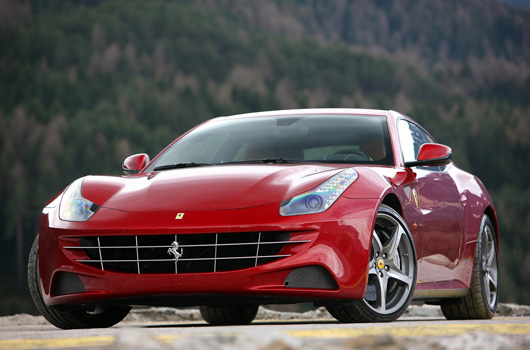
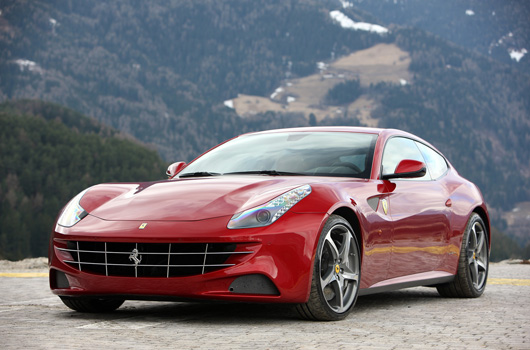
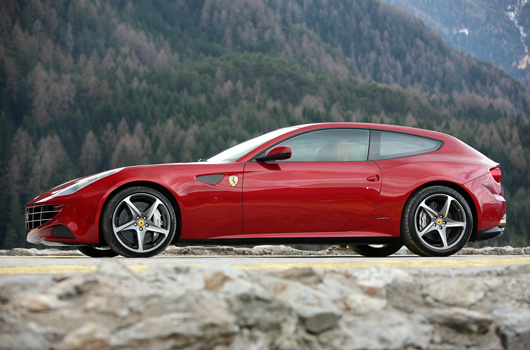
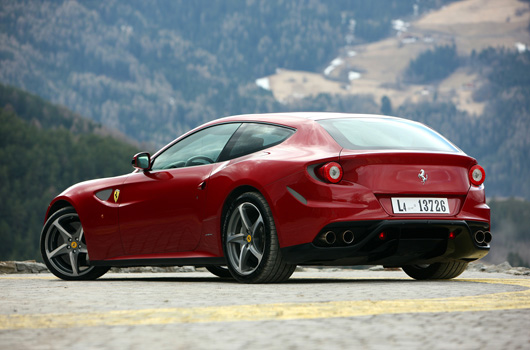
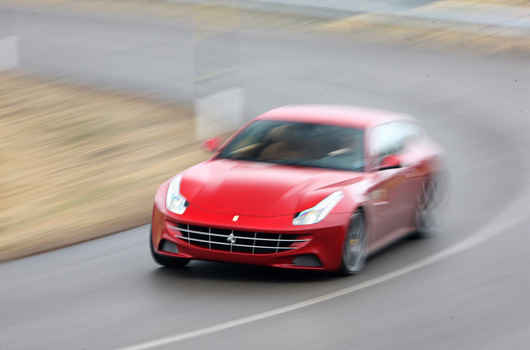
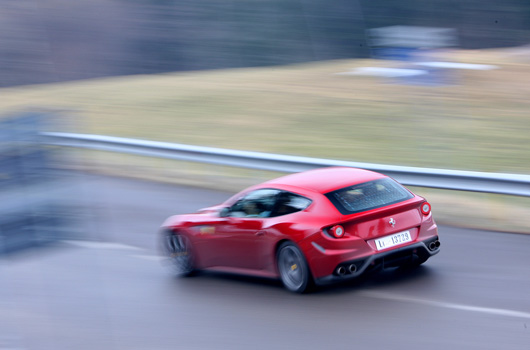
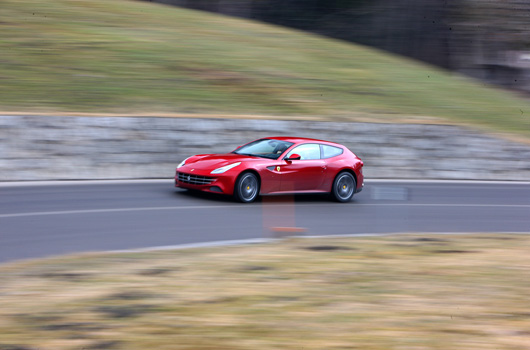
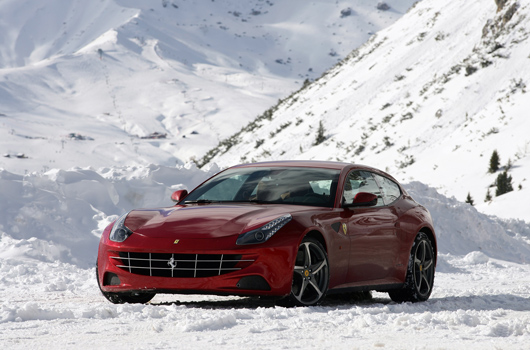
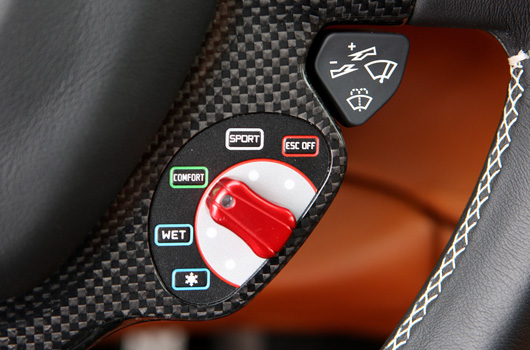
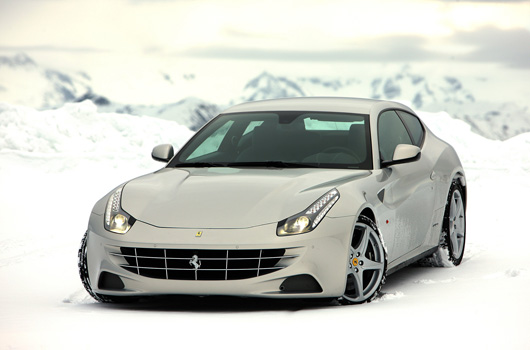
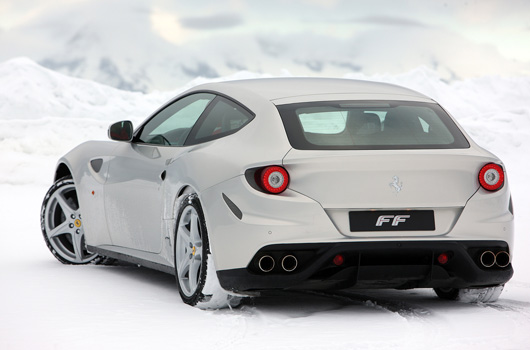
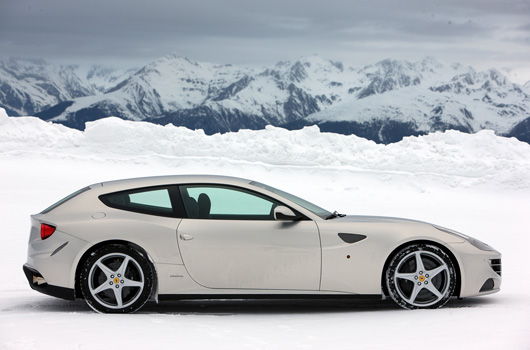
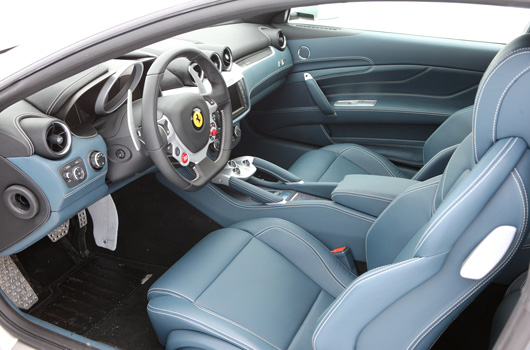
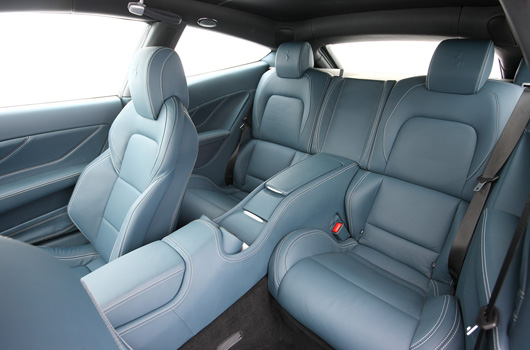
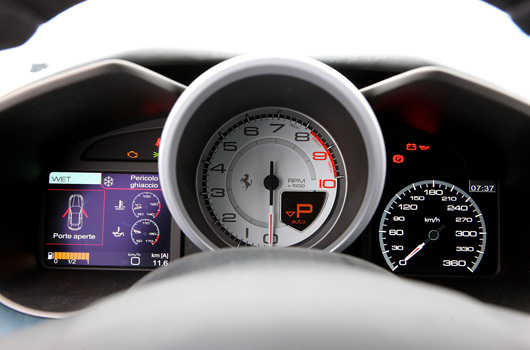
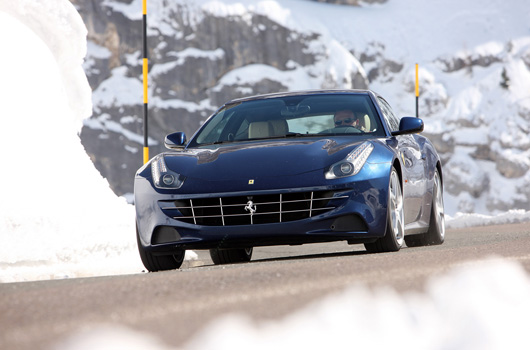
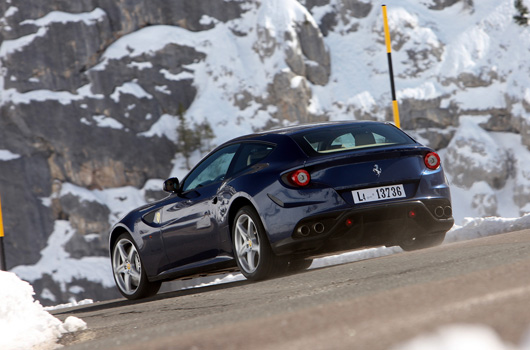
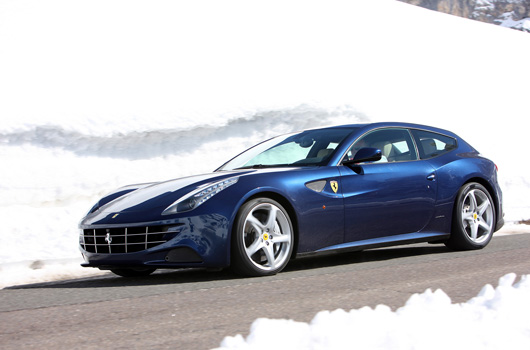
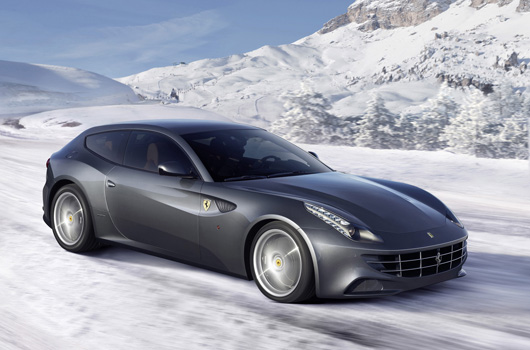
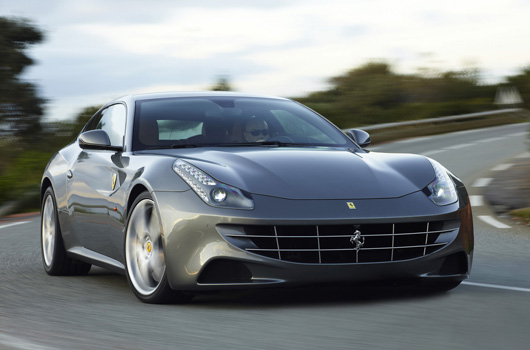
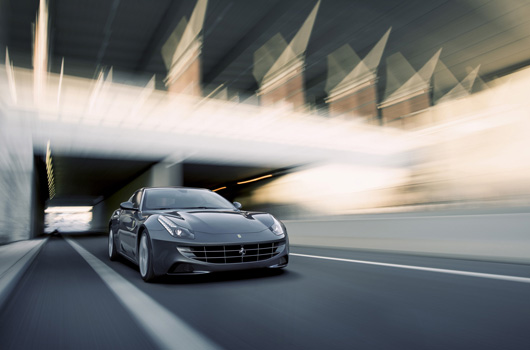
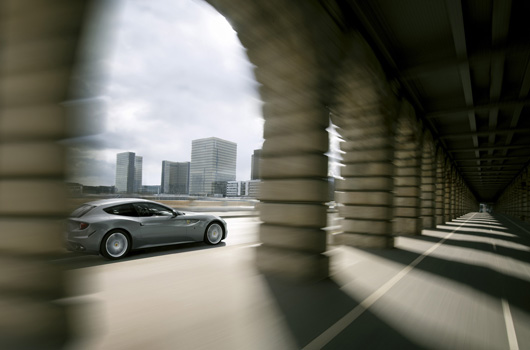
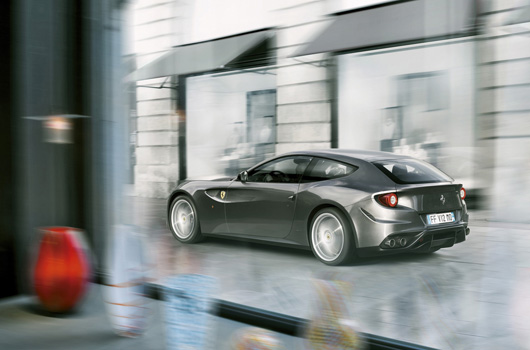
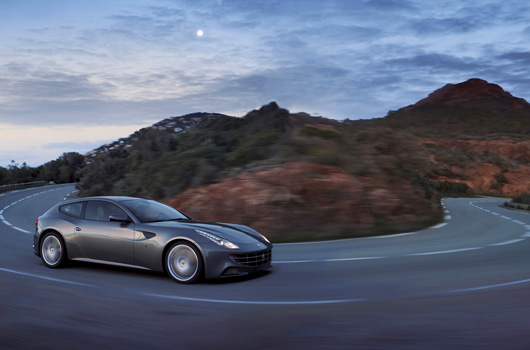
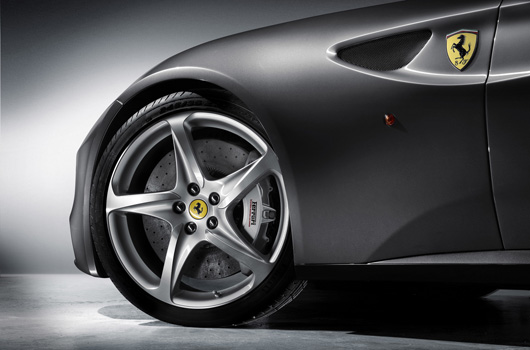
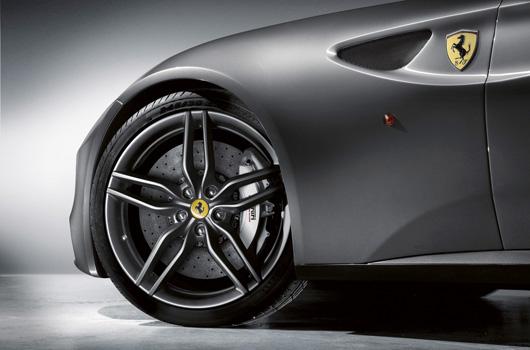
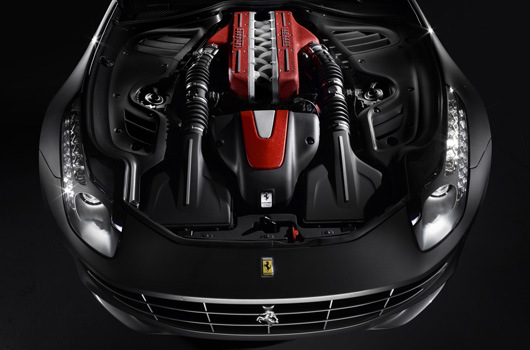
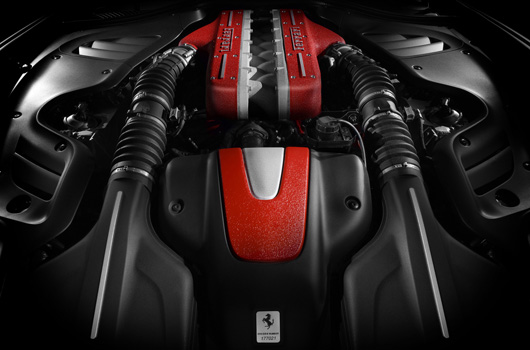
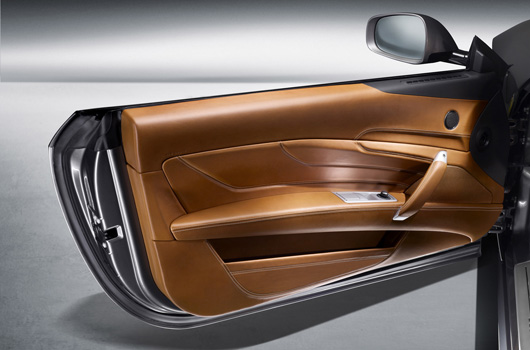
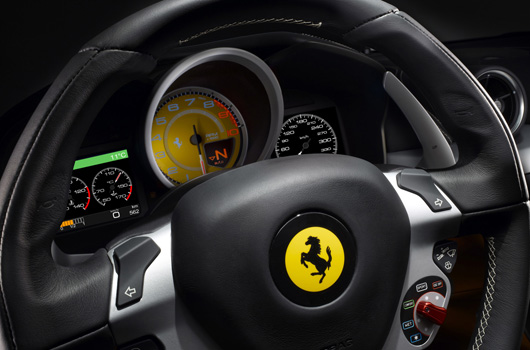
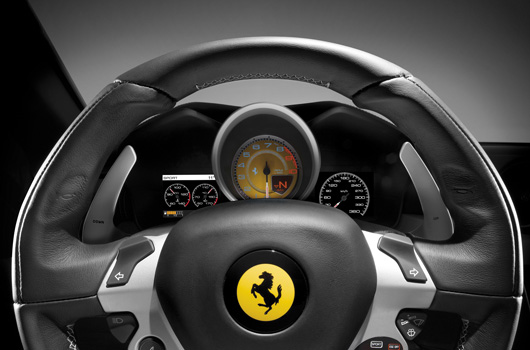
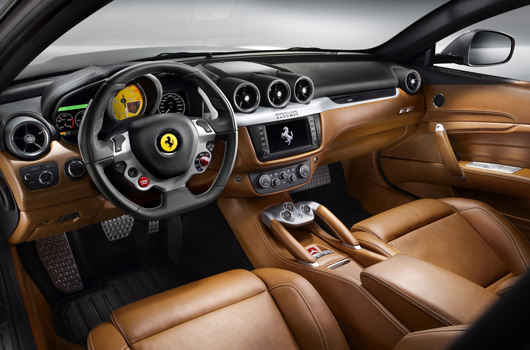
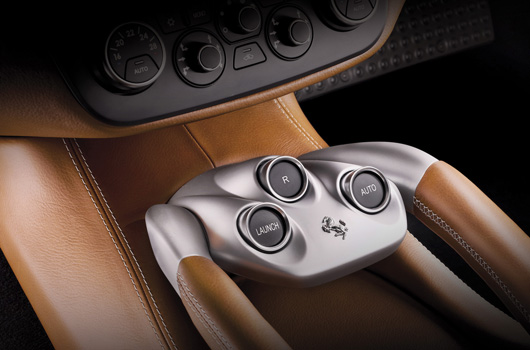
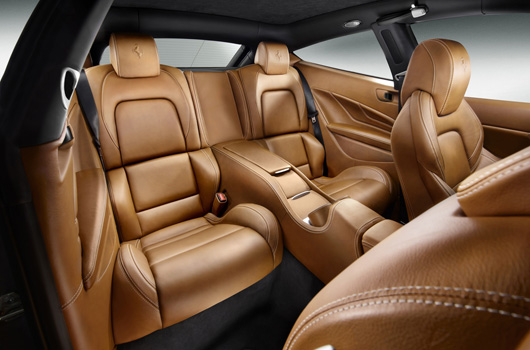
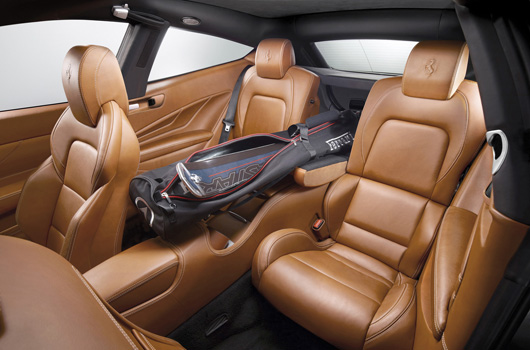
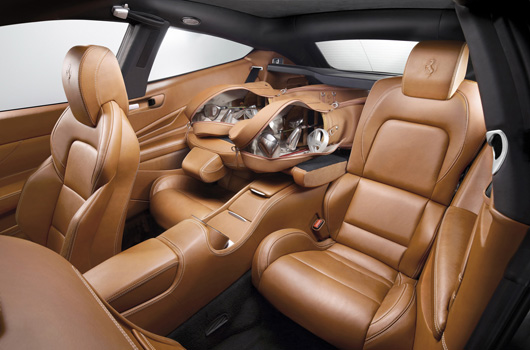
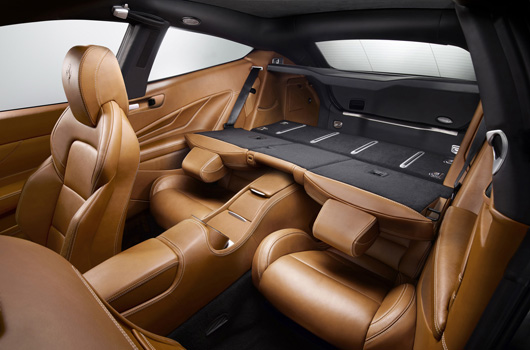
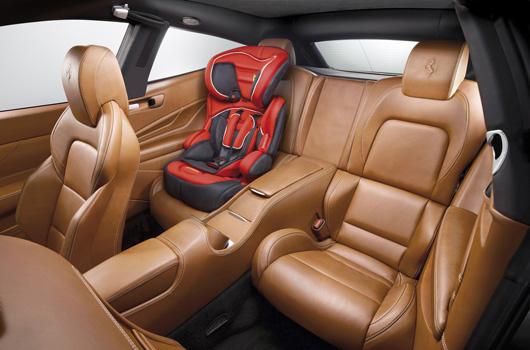
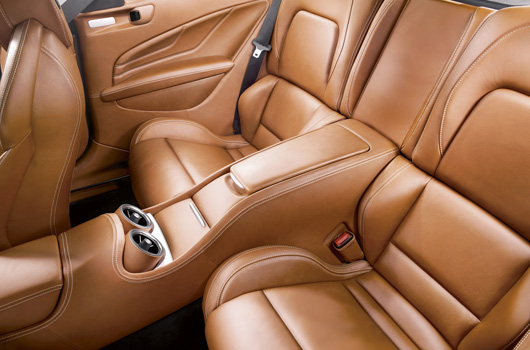
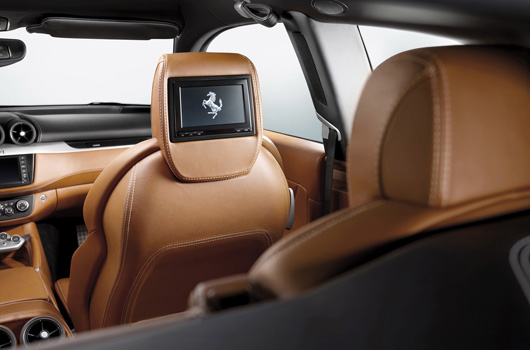
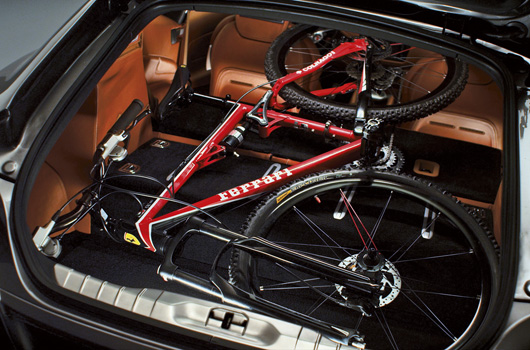
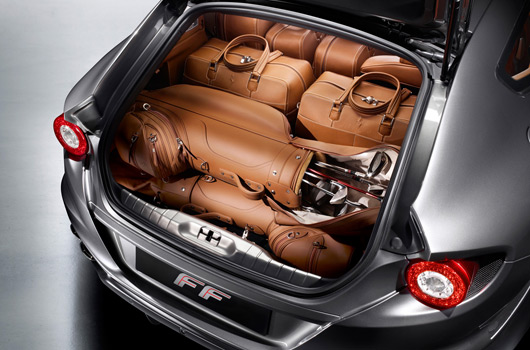
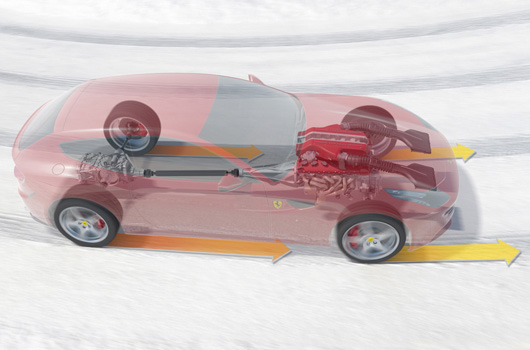
6 replies on “Ferrari FF photo gallery”
best looking fezz to come out of Maranello in a very long time
Agreed! Looks great. But it has to be red! Kinda reminds me of the Z3M breadvan a little.
For 600K I’d go for a 4dr M3 for daily, Cayman R for tracking and an AM Vantage S for cruising!
1 x 911 GT3 for weekends
1 x TT RS as a daily
1 x Passat R36 wagon for convenience
Then should still have enough change to take the missus on a nice overseas holiday.
I want one! Any of those colours would be fine too (preference would be the dark blue)!!!
As for getting a selection of cars instead of one FF – if I could afford an FF I’d already have three or four other cars so I’d be buying the FF for sure
PS: thanks for the terrific photogallery of it – best selection in one spot I’ve seen!
[…] has put the FF into f-f-fire for a stricken owner in China. The incident happened on Shi Bo Avenue in Shangahi and […]
[…] is working on a direct competitor for the Ferrari FF, Auto Express reports. Basically that would mean we’re faced with the very real possibility […]